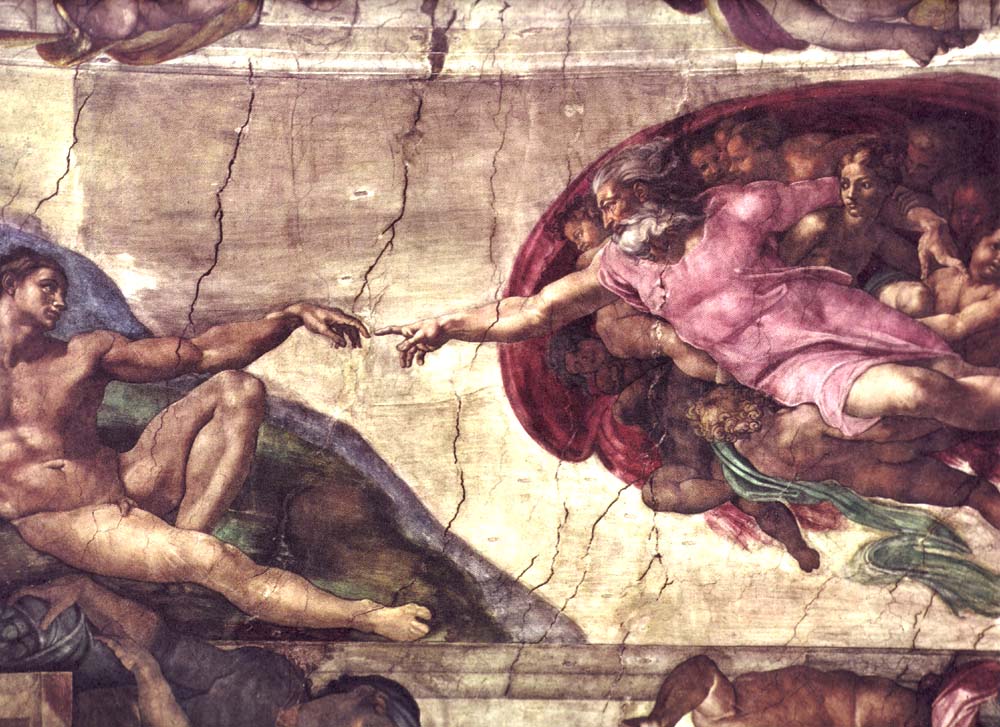Patience is referred to as the willingness to endure pain, difficulty, provocation or annoyance. It is also seen as a capability for calmly awaiting an outcome or result. Perseverance is viewed as adhering to a course of action. These may not be the first words that leap into one’s mind when thinking about great artists. Yet, patience and perseverance are seminal to domain mastery, be it in painting, sculpture or any of the visual arts.
Michelangelo and Leonardo da Vinci are well known for their extraordinary works of art. Why is it that we often refer to these two particular artists when we think of greatness? Could it lie in the fact that when we view their drawings, paintings or sculptures, a recognizable mastery is evident? How did Michelangelo and da Vinci hone themselves to excel? How do great artists strive?
“Practice makes perfect” is a well known phrase when referring to success in sports, music and virtually all fields. The Renaissance Masters knew this concept well. Contemporary artists follow this lead. Da Vinci spoke about forming strong concepts before beginning to create with one’s hands. This points to focused attention on one’s powerful ideas and passions. Diligence, practice, patience — we acknowledge and relate to these words as we set out to achieve. Regarding domain mastery, we can view some recent relevant research. Dan Coyle’s The Talent Code discusses that when we work and engage in trial and error in a methodical manner over a long period of time (deep practice), something happens to us neurologically — we develop myelin. This myelin is a wrapping or binding substance around the neural pathways. The more wrapping or binding, the more accurate and fast the thought processes and skills become. This would indicate a technique for domain mastery.
With Michelangelo, his specific sculptural interest was in working to release the human shape from within a block of marble. Born 1475 in Caprese, Italy, by the age of 14 he had exceeded his teacher Domenico Ghirlandaio in drawing skills. Yet his passion lay in learning the human figure by working in stone. At 15, Michelangelo was studying sculpture. With many others at the palace of Lorenzo de Medici, he became an apprentice artist. Classical Greek and Roman works were Michelangelo’s guides as he labored with three-dimensional forms.
Although painting and architectural work took up much of his life, Michelangelo’s fervor for depicting the human figure sculpturally never left him. At age 60, he spent some time each day, as he had in his youth, working with hammer and chisel. He displayed the same zeal as he had had as a younger artist.
Da Vinci (1452-1519) is known not only for his art but also for the many domains in which he excelled. In his early teens he served as an apprentice. In this program Leonardo learned many different skills in working with his hands — this was a hallmark of the workshop program in which art students studied and learned.
[pi_wiloke_infobox title=”References:” content=”• Coyle, Daniel (2009), The Talent Code. New York: Bantam Bell.
In 1482, da Vinci opted out of the apprenticeship program to become a court artist. Perhaps he wanted to pursue his many diverse interests. As he did extensive research into anatomy, botany, geology flight and hydraulics, he displayed genius in excelling in many spheres. He recorded his ideas on hundreds of notebook pages. He has been called self-absorbed — it could be looked at that he was pursuing his passion to understand subjects and media in ever more complex ways. Da Vinci kept lifelong notebooks in which he sketched, drew and redrew. He was known to work images and thoughts over and over, constantly seeking to find out and to learn more and more from them. He believed that in order to draw well, one had to learn to finish works and have patience with that process.
By learning from trial and error and being patient with the journey, somewhere along this path, we can look for the significant strengthening of prowess in domain building, and perhaps, the releasing of the extraordinary.
Eugene and Diana Avergon are committed to art education. Along with being exhibiting artists, they have taught art in the Chicago area and in New York, both in private and public schools.
The Avergons share a keen interest in “the role of choice” in art making — students can become more aware of what they are “drawn to” and what their ensuing choices might be. Their combined experience has resulted in the production of numerous books, tear pads, packets and posters, all under their Art by Choice trademark series. These publications are developed, produced and distributed exclusively through Nasco Arts and Crafts.
Eugene and Diana reside in Hebron, Kentucky. Through charitable auctions run by private schools, regional art centers and not-for-profit institutions, their own artwork in sculpture and printmaking goes to help fund scholarships in art and also to help endow other philanthropic programs.





